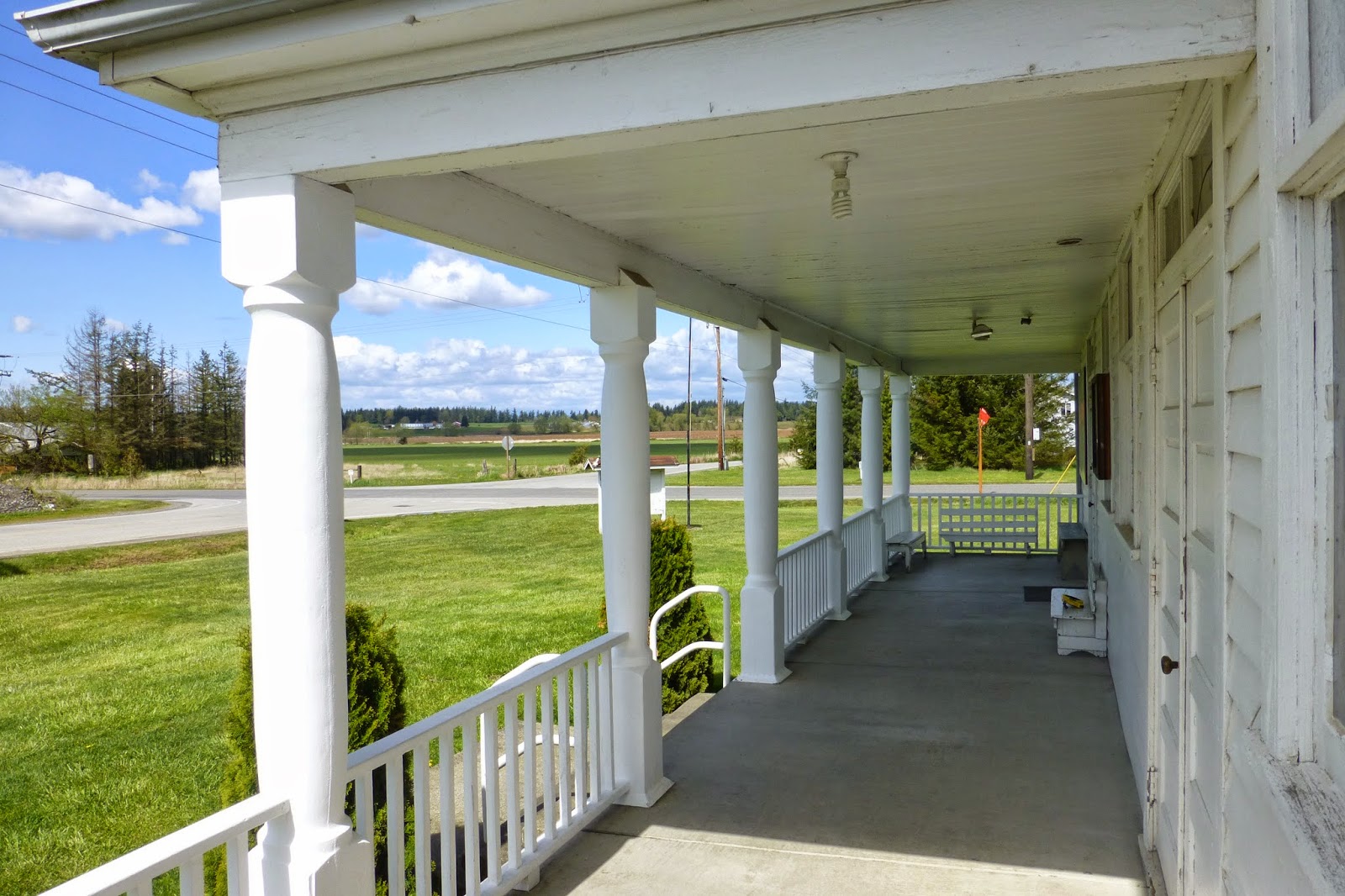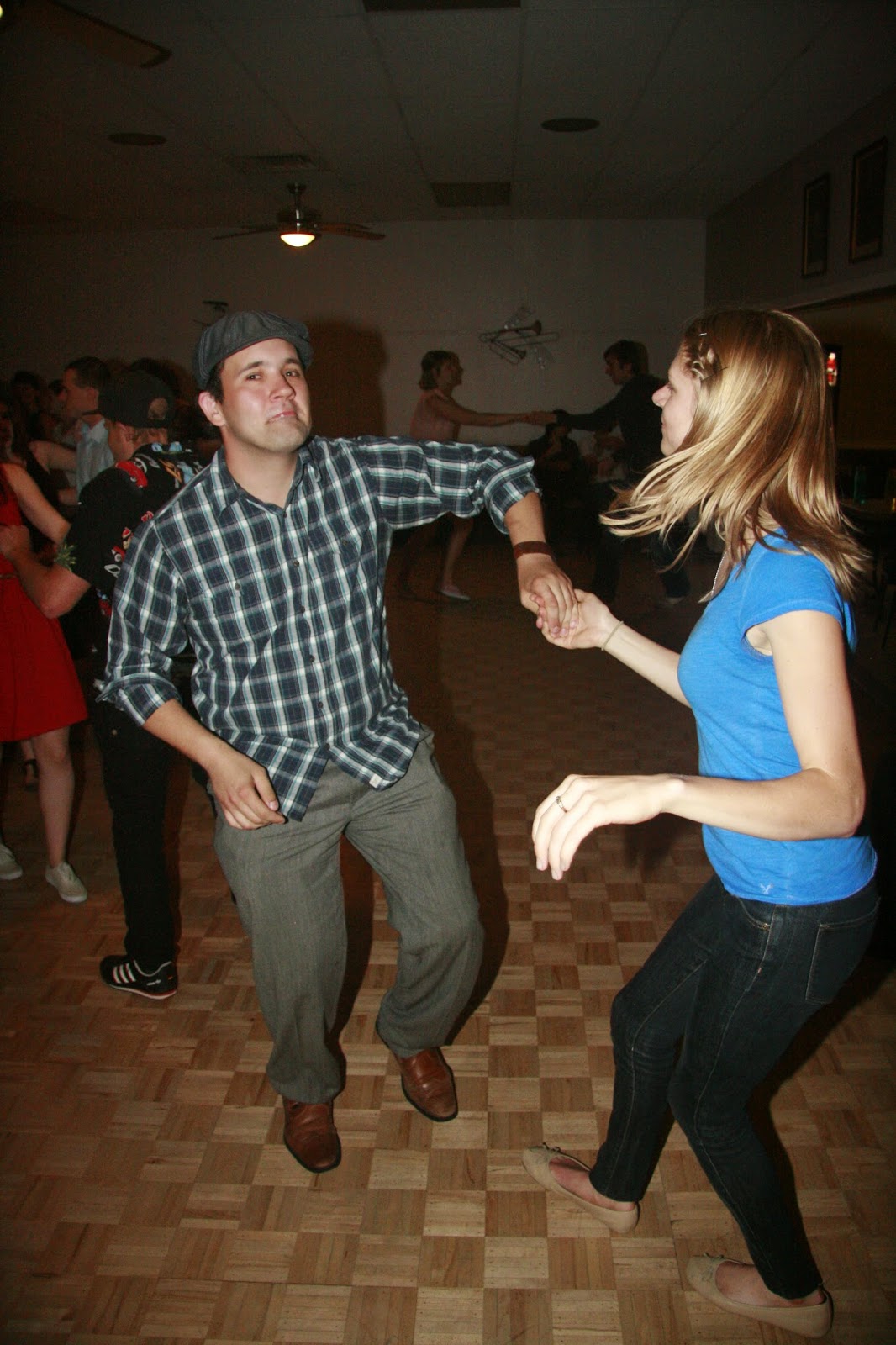Over the last couple of years, I have grown to love swing
dancing, swing music, and, much more significantly, swing dancers. Those who have read my other articles
are aware that I espouse an expansive vision of what this multifaceted
activity can do in people’s lives. But
now I have finally decided to put my passion for swing into action. Here are three things that motivated me to
start my own swing dance club:
As I understand it from those who have been active in our
local swing scene far longer than I have, swing kind of hit the peak of its
wave around approximately 2004. I have
been told that back then one could go swing dancing in Bellingham
almost every night of the week. Now,
however, the opportunities to dance are quite limited. My own experience has reflected this. I began swing dancing at Whatcom Swing, but
they ceased operations about a year ago.
I have also been dancing regularly at Swing Kids of WWU but, from what I’ve been told, and from what I’ve observed, their
attendance has been declining as well.
Local swing dancers typically have to drive all the way down to Seattle
to access really good clubs. The sad
reality is that our local Whatcom County
swing community seems to be dying off. Needless
to say, this really concerns me. Should
we just sit around and let something this good be lost? Should dancers who really love swing just
have to give it up and move on to other things simply because the local
opportunities to dance are so limited? I
believe that our swing community can be revived. In fact, I believe that it must be revived.
Another motivation that really hit me in a sudden and
unexpected way happened at one of our local high school benefit dances, to
which Swing Kids was invited both to teach a basic swing class, as well as to
dance with the students. As a matter of
policy I always offer to dance with every follow in the room. Two of these high school students in
particular made a very significant impression on me. When I asked them to dance they were both
rather unsure about dancing, telling me that they had never danced before and
that they had two left feet and etc., etc.
But, while dancing with them, I quickly realized that they were not only
fantastically fast learners, but that they also had amazing natural dance
abilities! They truly didn’t realize how
good they were. I was quite astounded by
this whole experience. I
enthusiastically told them that they had a fantastic gift for dance, and that
they simply must keep dancing! I then tried
to tell them where they could go to dance regularly, but I simply couldn’t
think of any places in our county where I thought that they would feel comfortable and at ease.
To be honest, that experience was the final trigger that set this idea
of starting my own dance club in motion.
If these students were any indication, then there are many, many young
adults in our community who would love swing dancing immensely if they only had a local dance club where they could go to develop
their dancing abilities and share their passion for dance with other like-minded
dancers.
Foundationally, however, there was something else -
something very solid and very significant. That something was what I have both observed
and experienced during my one and a half years of dancing at Suburban Swing in Abbotsford,
Canada. You can read my original review on that
beautiful place here:
Suburban Swing is, in my experience, much of what I have
dreamed and envisioned that a swing dance club could be. The excellence of Suburban Swing is the
result of many good people working together:
There are the excellent owners and managers Jason & Crystal Warner,
their fantastic staff, their fabulous DJs and, in truth, and most significantly,
the truly good-hearted young people who come to dance and visit there every
Sunday night. The kindness, the
friendliness, the genuine spirit of welcome, the excitement, the joy, the just
fantastic goodness and loveliness of these people has blessed so many, in so
many ways, and I have been greatly privileged to be blessed by it as well. Sadly, though most of our local experienced
swing dancers know about Suburban Swing, very few of them have been willing to
go through the difficulty of crossing the border to go and dance there. They don't know what they're missing.
If only the greatness of Suburban Swing could be replicated for
the young people of my home community of Whatcom
County. If only they could have what I never had when
I was growing up. If only they could
experience the fantasticness that I have found there. I know that it would do them so much
good. They would grow in so many different
ways and that would give them such a great start in every area of their
lives. They would meet such great
friends that really cared about them, and they would have such good times
together. They would gain such great
memories to look back on and to cherish for the rest of their lives.
The bottom line is that I know how much good this kind of a
dance club can do in the lives of people (especially young people). I know what a positive, life-enhancing thing
this can be for them. That is why I am
basically pulling out all stops and pouring my life into this project right
now. I know its potential. I don’t just dream it. I don’t just envision it. I can see it.
I can feel it.
I know this won’t be easy.
I know that it will be a challenge just to convince people to get in
their cars and drive to a dance venue out in the country and to try swing
dancing for the first time, but I believe that it is totally worth the
investment, the time and the risk.
So, now that I’ve explained a bit about why I am starting
this club let me provide you with a few details about what kind of club it will
be, where the venue is and when this all will be happening:
We will be a 1920s to 1940s style swing dance club. We will dance mostly East Coast Swing, Charleston,
Lindy Hop and Balboa. We hope to branch
out, however, into other great dance styles like the smooth and artistic West
Coast Swing, the graceful Night Club Two Step, the fun and relaxing Salsa, and,
of course, the ever classic Waltz.
We will do this to the best swing, Jazz and Pop music we can
find with the help of some of our area’s best local DJs. I have purchased top quality equipment for
a sound system that I have specifically designed for this particular venue.
I will soon be collaborating with some of our area’s best up-and-coming
young adult vocalists to accompany our vintage music. As there are few more enthusiastic and
supportive audiences than swing dancers, I believe this will be a fantastic
addition to our club for all involved. I am also reaching out to our local Jazz and swing bands to provide live music.
Our venue is charming, historic and unique. It is the original 1906 Glen Echo Schoolhouse, located a mile east of the towns of
Everson and Nooksack, at the corner of the South Pass and Goodwin Roads. Its address is 7694
Goodwin Road Everson, WA. It is about 8 minutes south from the Sumas Border
Crossing with Canada
and about 27 minutes from the lower parking lot of the Viking Union Building of
WWU in Bellingham. It has its own lighted parking lot with
abundant free parking. It has a large
and beautiful, clear, vertical grain, 110 year old Douglass Fir floor suspended
on fir joists so it is naturally resilient and thus easy on the ankles and
knees. The building itself is rich with
history. After the public schools were
consolidated in 1943 it became a community hall, just in time for the golden
age of swing dancing during World War Two.
And now, swing dancers will grace its floors once again. Just imagine the nostalgic beauty of that!
As for when this will all be happening, we will be having
our Grand Opening and Ice Cream Social on Monday, the 11th of May, just
3 weeks from now as of this writing. We
will be opening at 7:00 PM for our
basic East Coast Swing Class followed by our Social Dance Party from 8:00 to 11:00 PM. Thereafter, we will be open for dancing every Monday evening during those same hours starting with our drop in class and followed by our social dance party.
My rather popular and always charming twelve year old daughter Tiffany and I will be teaching the class. People can dress casual if they like, or they can dress up and brighten the evening for everyone in attendance.
My rather popular and always charming twelve year old daughter Tiffany and I will be teaching the class. People can dress casual if they like, or they can dress up and brighten the evening for everyone in attendance.
We have a Facebook page on which you can find an interactive Google map to the venue as well as other information and Photos that will give you an idea of what swing dancing is like. If you would like to, you can also click "like us" on that Facebook page as well:
https://www.facebook.com/wylinswing
https://www.facebook.com/wylinswing
As for the cost for the class and the evening dance - all this
fantastic fun can be had for just $5. US or Canadian at the door.
And now, about our club’s name. Some of our more inquisitive dancers may have
attempted to look up the word “Euphorium” in their dictionaries only to find that
it doesn’t exist! That’s right, it’s not an actual word. But that’s
nothing new for me as I make up words all the time. Why, even my first name was made up (by my
parents). The advantage of this arrangement is
that you can create your own meaning to match your made-up word. So, to me, it seemed like a “Euphorium” should
be a place where people can go to enjoy the fantastic freedom of “euphoria” – officially
defined as: “A feeling of great elation, joyousness and well being.”
And that’s our goal for this dance club - to bring euphoria,
friendship and real joy into the lives of the people we serve. And, as I’m sure you can imagine, I’m really,
really looking forward to that, for there is nothing in this life that compares
with the experience of seeing genuine joy in the faces of our dear friends.
All the best to you all, and Tiffany and I would love to welcome you as our guests at our grand opening, and every Monday evening thereafter,
Wylin Tjoelker
Dance Evangelist Dance Club
Review
















































































